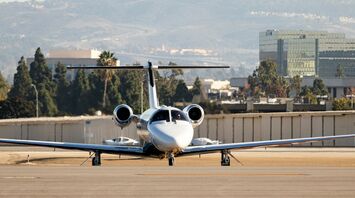Why Takeoffs from California's John Wayne Airport Keep Passengers on Edge

Many travelers likely remember their first flight out of John Wayne Airport (SNA) in Southern California. Situated in Orange County, SNA primarily serves cities southeast of the greater Los Angeles area and is often a preferred alternative to the always-busy Los Angeles International Airport (LAX). Despite its convenience for passengers, SNA's unique layout and operational constraints present significant challenges for pilots.
John Wayne Airport has two runways, but only Runway 20R, which is 5,700 feet long, is used for commercial flights. This is relatively short compared to most other airport runways, which usually exceed 10,000 feet. The airport's proximity to busy freeways and residential areas in Newport Beach limits its ability to extend this runway.
The County of Orange owns and operates SNA, implementing strict noise control regulations to mitigate disturbances to nearby communities. According to the Orange County Register, SNA is among the most noise-sensitive airports in the U.S., with stringent noise rules and monitoring stations to ensure compliance. The airport also enforces a curfew to further control noise levels.
Full Throttle
Due to the short length of Runway 20R, pilots must spool engines to full power for takeoff, often between 95% and 100% throttle. This sudden surge of power can surprise passengers unaccustomed to such forceful takeoffs. Upon landing, planes use reverse thrust quickly to decelerate, contributing to the airport's noise restrictions. SNA enforces a curfew with the following rules:
- Departures: 22:00-07:00 (Mon-Sat), 22:00-08:00 (Sun)
- Arrivals: 23:00-07:00 (Mon-Sat), 23:00-08:00 (Sun)
Fast Roll
Once engines reach full power, pilots release the brakes, propelling the aircraft down the runway with intense speed. This rapid acceleration pushes passengers back into their seats, creating a palpable sense of urgency. This effect is particularly strong on aircraft with engines mounted near their tails, like the Bombardier CRJ-700, frequently operated by United Express from San Francisco.
Steep Climb
After takeoff, aircraft from SNA typically pitch at a steep angle between 20 and 25 degrees, about twice as steep as the 10-15 degrees common at other airports. This aggressive climb helps planes gain altitude quickly, distancing them from noise-sensitive areas and airport noise sensors.
Sinking Sensation
As aircraft reach around 1,000 feet, engine power is significantly reduced, creating a noticeable drop in thrust and a leveling of the nose pitch. This sudden reduction can alarm passengers, giving a sinking sensation and making them feel as if something is wrong. However, this maneuver helps manage noise levels and ensures safety.
Left Turn
The final phase of the takeoff usually involves a left turn to a heading of around 175 degrees, steering planes away from the densely populated areas of Newport Beach and Balboa Peninsula. As aircraft clear these areas, pilots adjust engine power and retract flaps, which might cause another sinking feeling before normal flight conditions resume.
Despite the initial shock, frequent flyers and aviation enthusiasts might find the unique takeoff procedures at SNA fascinating. The airport handles a variety of aircraft daily, including larger models like Delta Air Lines' Boeing 757-200s to Atlanta and FedEx Express' Airbus A330-600F.



















